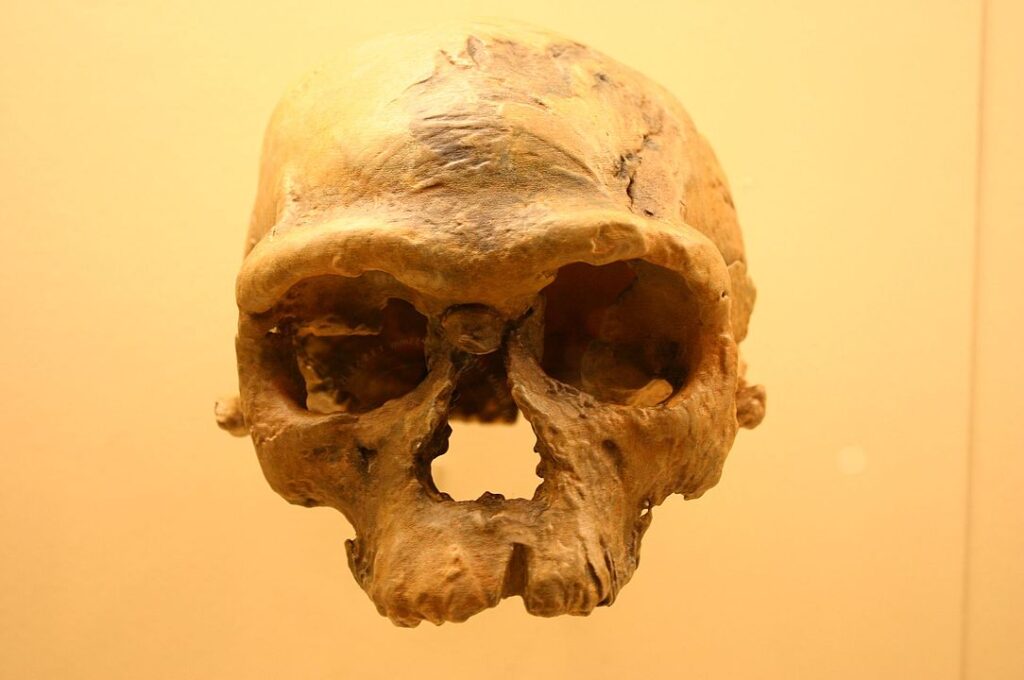A team of researchers led by paleoanthropologist Jean-Jacques Hübl (Max Plank Institute in Leipzig, Germany), at the end of 2017 made the announcement of a very important archaeological and paleontological discovery. The Lost Ark? The Holy Grail? No. An even more interesting find than the ones chased by our beloved Indiana Jones … A real find. We are talking about the discovery, at the Jebel Irhoud site (Morocco, North Africa), of the oldest fossil remains belonging to our species: Homo sapiens.
Indeed, the cradle of Homo sapiens is African. However, for a long time, Europeans refused to place the origin of humankind in Africa; even when the English naturalist Charles R. Darwin proposed, in 1871, that humans were born on the African continent, most scientists said that this was impossible and that we must have a noble European lineage. Perhaps that is why in the middle of the 19th century, when ancient bones belonging to prehistoric individuals similar to today’s Homo sapiens were found in the Cro-Magnon Shelter (France), it was said that the cradle of our species was in Europe: the famous “Cro-Magnon Man”.
This was a racist and ethnocentric position very typical of the 19th and early 20th centuries, but, fortunately, science is advancing and is the best tool to fight against prejudices, clichés and unfounded legends. The research of many archaeologists and palaeontologists, from the 20th century to the present day, has shown that Darwin was right: the origin of mankind is in Africa, and there we find the first hominids -with a very ape-like appearance- who walked on two legs between 7 and 6 million years ago. Some of them evolved – changed – into human forms with larger and larger brains; the road to our species: Homo sapiens. And so, in Africa, remains of sapiens were found far earlier than those excavated in Europe and elsewhere in the world. Indeed, Homo sapiens, like the first hominids, was also born in Africa; from here it spread to the rest of the continents. But what was the date of its birth? If in Europe the oldest remains of sapiens were not much older than 40,000 years, on the African continent, in the eastern region, researchers identified Homo sapiens up to 200,000 years old. The home of the earliest representatives of our species was in East Africa, in the Great Rift Rift.
But news about Human Evolution flows fast and steady. There is always the announcement of a new find. Anyway, let’s not worry. Let’s not get nervous. In spite of the flashy headlines, these discoveries do not represent a breakdown in what we already know, but quite the opposite: they provide us with more pieces to fill in the holes of a big puzzle that is well underway.
In this sense, the discoveries made at the Moroccan site of Jebel Irhoud do not deny what we already knew, the African origin of Homo sapiens, but they do tell us that its date of birth is older than we thought: 300,000 years! And, very importantly, thanks to this discovery we can say that the presence of the first representatives of Homo sapiens is in North Africa when, until now, it was only located in sub-Saharan Africa (East Africa).
What were they like? Physically they were almost the same as us. If we had dressed them in trousers, a T-shirt and trainers, they would have played a game of basketball or football with you without you noticing the slightest differences. For example, being very ancient, even admitting that biological evolution involves the -usually slow- passage from predecessor species to descendant species, although they had a more robust rear area of the skull (in the nape of the neck area) than we do. And in relation to one of the anatomical characteristics that are typical of all Homo sapiens, i.e. the chin, these individuals from Jebel Irhoud had a chin, but not as pronounced as that of present-day sapiens.
How did they live? Prehistoric Homo sapiens, like their ancestors (Homo ergaster, Homo habilis, Australopithecus, etc.), were hunter-gatherers. This means that they fed on the meat of the animals they hunted and the vegetables they gathered as they moved around the territory. In effect, they were nomadic. They never occupied a shelter, cave or open space for long periods of time but, in small groups of perhaps 20 or 30 individuals, they moved in the footsteps of their food as many other animals do.
They made stone tools – such as those found at Jebel Irhoud – with which they butchered their prey, prepared skins, processed vegetables or built more complex artefacts with the help of wood, plant fibres, sinews, bones, etc. They communicated, like us, with an articulated language and, in all probability, they buried their dead and elaborated highly complex symbolic systems (paintings, rituals, music…).
And, very importantly, the great antiquity of the Jebel Irhoud remains shows us, once again, that human evolution is not a single line of hominids (as we often see in books, magazines or T-shirts). The evolution of life, as Darwin said, is in the form of a tree. Humans, starting from a common ancestor – the trunk of the tree – separated – branched – into different branches. One of them evolved into Homo sapiens. Today we are the only humans on the planet, but 300,000 years ago sapiens coexisted with humans from other branches of the evolutionary tree. For example, in Europe and the Near East, Homo sapiens coexisted and interacted with Homo neanderthalensis: the Neanderthal.
Evolution, without a doubt, always tells the most beautiful story of the world.



